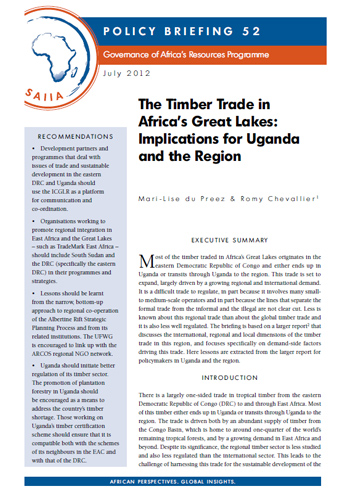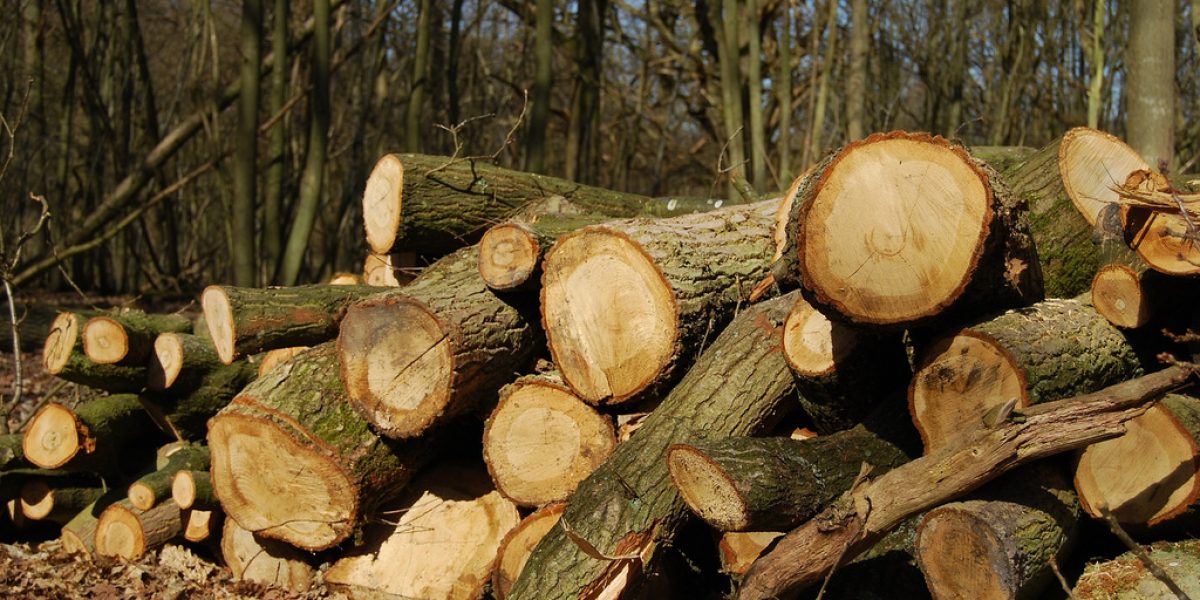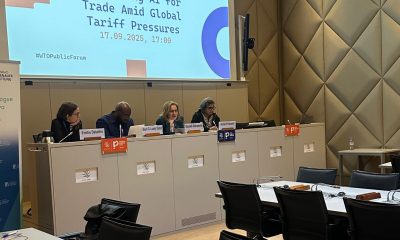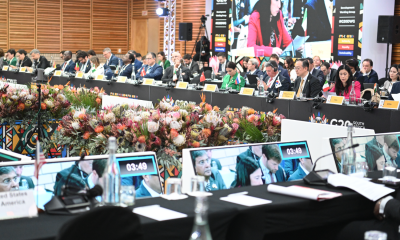This was also the guiding question of a recent SAIIA study on the tropical timber trade in Africa’s Great Lakes region. The report, entitled Timber Trade in Africa’s Great Lakes: The road from Beni, DRC to Kampala, Uganda focuses on international, regional and local demand-side drivers of tropical timber exports from the eastern Democratic Republic of Congo (DRC) to and through Uganda.
SAIIA’s Governance of Africa’s Resources Programme conducted extensive fieldwork in the region and found that the bulk of tropical timber on East African markets is from the eastern DRC. Around 80% of the timber leaving eastern DRC does so via the DRC/Uganda border. The flow is largely unregulated and provides little revenue for the country of origin.
This is a concern for both Congolese policymakers and for international timber buyers, who do not want their wood imports tainted by illegal and unsustainable practices. The aim of the report is not to advocate stopping this trade in timber, but to consider how this trade can contribute to sustainable development in the region – especially against a backdrop of historical and ongoing cooperation and conflict.
To better understand these trends, this study investigates the growing consumer demand for legal and certified forest products in developed countries, particularly in Europe and the US. International chains are becoming increasingly regulated – both from the supply- and demand-side – through such initiatives as the EU-supported Forest Law Enforcement, Governance and Trade (FLEGT) process, the related Voluntary Partnership Agreements (VPAs) and the US Lacey Act. These initiatives include a ‘chain of custody’ component that requires the participation of intermediary actors like China – the wood workshop of the world, where much of the world’s wood processing activities are located.
Although the international flow of timber may well become a major issue in the future (as illustrated by a country like Mozambique, which exports more than 80% of its roundwood to China), closer inspection of the timber chain in Africa’s Great Lakes region reveals that most of the timber from the eastern DRC is intended for regional markets. Very little is exported beyond the region. Kenya is the largest regional consumer of Congolese timber, followed by Uganda and South Sudan. Uganda’s importance derives from the fact that it serves both as a market for Congolese wood and as a transit point for wood destined for Kenya and South Sudan.
The study finds that:
- The regional timber trade differs from its international cousin in that it is small scale and largely informal despite being larger in volume.
- There is less pressure to regulate this trade from the regional demand-side (in East Africa) than from the international demand-side (for example, Europe and the US). In part, this is because East Africa is suffering from a timber shortage and thus welcomes timber from all sources.
- Several regional initiatives that may have an impact on the trade and/or provide lessons for its regulation, including trade facilitation along the Northern Corridor linked to the Trilateral Free Trade Agreement between the Southern African Development Community, the East African Community and the Common Market of Eastern and Southern Africa (SADC-EAC-COMESA T-FTA); and the Albertine Rift Strategic Planning Process. The latter includes co-operation on protected areas.
- Local non-governmental stakeholders can play an important role in reducing governance loopholes and improving transparency in this sector.
- Within Uganda there are some actors who benefit financially more than others. In the local part of the chain, middlemen and a select group of traders benefit most, while much of the risk is carried by timber cutters and drivers. Those with political connections also stand to benefit more than those without, largely because they can ‘save’ along the chain (for instance, by being granted exemption from taxes or fees), and so afford to undercut others in price.

Download the full report called “Timber Trade in Africa’s Great Lakes: The road from Beni, DRC to Kampala, Uganda”, a SAIIA Research Report by Mari-Lise du Preez and Romy Chevallier, August 2012. |

For a summary of the main findings, download the Policy Briefing “The Timber Trade in Africa’s Great Lakes: Implications for Uganda and the Region” by Mari-Lise du Preez and Romy Chevallier, July 2012. |








